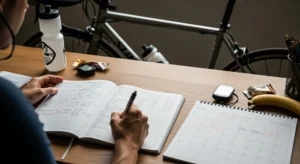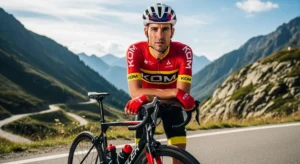Cycling is an exhilarating and healthy way to explore your surroundings, get fit, and reduce your carbon footprint. However, like any outdoor activity, it comes with its own set of safety risks. Whether you’re a seasoned cyclist or a beginner, understanding the best practices for safe riding can make all the difference between an enjoyable ride and a dangerous one.
In this blog post, we’ll share essential cycling safety tips to help you ride smart and stay safe on the road, ensuring you can enjoy your cycling adventures with confidence.
1. Wear a Properly Fitting Helmet
One of the most critical safety measures you can take as a cyclist is wearing a helmet. Helmets are designed to protect your head in case of a fall or accident, significantly reducing the risk of severe head injuries. Make sure your helmet fits snugly and comfortably. It should sit level on your head and not shift when you move.
Look for a helmet that meets safety standards such as CPSC (Consumer Product Safety Commission) certification for the best protection. And remember, never ride without one, regardless of how short or simple the ride might seem!
2. Check Your Bike Before You Ride
Before heading out, always conduct a quick pre-ride inspection of your bike. A well-maintained bike is less likely to break down or cause accidents. Here are the key things to check:
-
Tires: Ensure your tires are properly inflated. Under-inflated tires can lead to poor handling and increased risk of flats.
-
Brakes: Test your brakes to ensure they are responsive and not worn out. Brakes are crucial for stopping quickly when necessary.
-
Chain: Make sure your chain is clean and properly lubricated. A stiff or rusty chain can make cycling difficult and may even break during a ride.
-
Lights and Reflectors: If you’re cycling in low-light conditions or at night, check that your bike has working front and rear lights, as well as reflectors. Visibility is key to staying safe.
3. Wear Visible Clothing
Visibility is critical for cyclist safety, especially if you’re riding in areas with heavy traffic or during dusk or nighttime. Choose bright, reflective clothing or gear that makes you more visible to drivers. Neon or fluorescent colors like yellow, orange, or green are ideal for daytime rides.
Additionally, wear reflective vests, jackets, or armbands during low-light conditions to ensure drivers can spot you from a distance. Consider using reflective tape on your bike and helmet for added visibility.
4. Follow Traffic Laws and Signals
Cycling is not only a physical activity but also a form of transportation, so it’s important to follow the same traffic rules as drivers. Obey traffic signs, stop at red lights, and yield to pedestrians in crosswalks.
-
Ride in the same direction as traffic, not against it.
-
Use hand signals to indicate turns or lane changes. Left turn: extend your left arm straight out. Right turn: extend your right arm straight out or use a left arm bent at a 90-degree angle.
-
Stop at stop signs and yield to other vehicles as appropriate.
-
Avoid riding on sidewalks, as it can be dangerous for pedestrians and may violate local laws.
5. Be Defensive, Not Aggressive
Being a defensive rider means staying alert and anticipating potential hazards. Always assume that drivers may not see you, and take precautions to avoid potential collisions. Here’s how:
-
Stay aware of your surroundings: Always scan the road ahead and check for hazards such as potholes, debris, or cars pulling out of driveways.
-
Maintain a safe distance: Keep a safe distance from other cyclists, pedestrians, and vehicles. Avoid riding too close to parked cars to prevent accidents caused by car doors opening unexpectedly.
-
Be cautious at intersections: Intersections are high-risk areas. Slow down and be ready to stop if necessary. Look both ways before proceeding, even if you have a green light.
6. Ride in Dedicated Bike Lanes
Where possible, always ride in designated bike lanes or bike paths. These areas are specifically designed to keep cyclists safe and separated from motor vehicle traffic. If a bike lane isn’t available, ride as close as possible to the curb, and never ride in the middle of the lane.
In urban areas, try to stick to streets with lower traffic or slower speeds. Avoid highways or busy streets unless it’s absolutely necessary.
7. Use Proper Lighting and Reflectors at Night
If you plan to ride at night, make sure your bike is equipped with proper lighting. At a minimum, you should have:
-
A white front light: A headlight that’s bright enough to illuminate the road ahead.
-
A red rear light: A tail light that helps drivers see you from behind.
-
Reflectors: Ensure your bike has reflectors on the front, rear, and wheels to improve visibility.
Remember that while reflective gear and bike lights can significantly enhance your visibility, it’s still crucial to stay extra cautious at night since drivers may not notice you as quickly as they would during the day.
8. Stay Hydrated and Fuel Up
Cycling can be an intense workout, especially on long rides. It’s essential to stay hydrated and maintain your energy levels. Bring along a water bottle and take breaks to hydrate throughout your ride. On longer rides, pack some energy snacks like fruits, energy bars, or nuts to keep your energy up.
Dehydration and fatigue can impair your reaction times and focus, increasing the risk of accidents, so always be mindful of how your body feels during a ride.
9. Be Prepared for Emergencies
No matter how prepared you are, unexpected situations can happen on a bike ride. It’s wise to carry a basic repair kit, including a spare inner tube, tire levers, and a mini-pump. These tools can help you fix a flat tire and get back on the road quickly.
Additionally, carry your ID, emergency contact information, and a phone with you in case you need assistance.
10. Ride Smart in Adverse Weather Conditions
Cycling in bad weather conditions, such as rain or snow, requires extra caution. Wet roads can be slippery, and visibility may be reduced. If you need to ride in these conditions, here are some tips:
-
Reduce your speed: Slow down to give yourself more time to react to changes in the road.
-
Increase visibility: Use bright clothing and additional lighting, and be extra vigilant for hazards on the road.
-
Stay visible: Watch out for puddles, wet leaves, or ice patches that can cause you to lose traction.
If the weather conditions are too extreme (heavy rain, snow, or ice), it may be safer to postpone your ride or choose an indoor cycling option.
Final Thoughts
Cycling can be a safe and enjoyable activity when you take the proper precautions. By following these cycling safety tips—wearing a helmet, being visible, following traffic laws, and staying alert—you can significantly reduce the risk of accidents and injuries.
Remember, being a responsible cyclist doesn’t just protect you—it also helps ensure the safety of others on the road. So, gear up, ride smart, and enjoy the many benefits cycling has to offer!
Stay safe and happy cycling!




